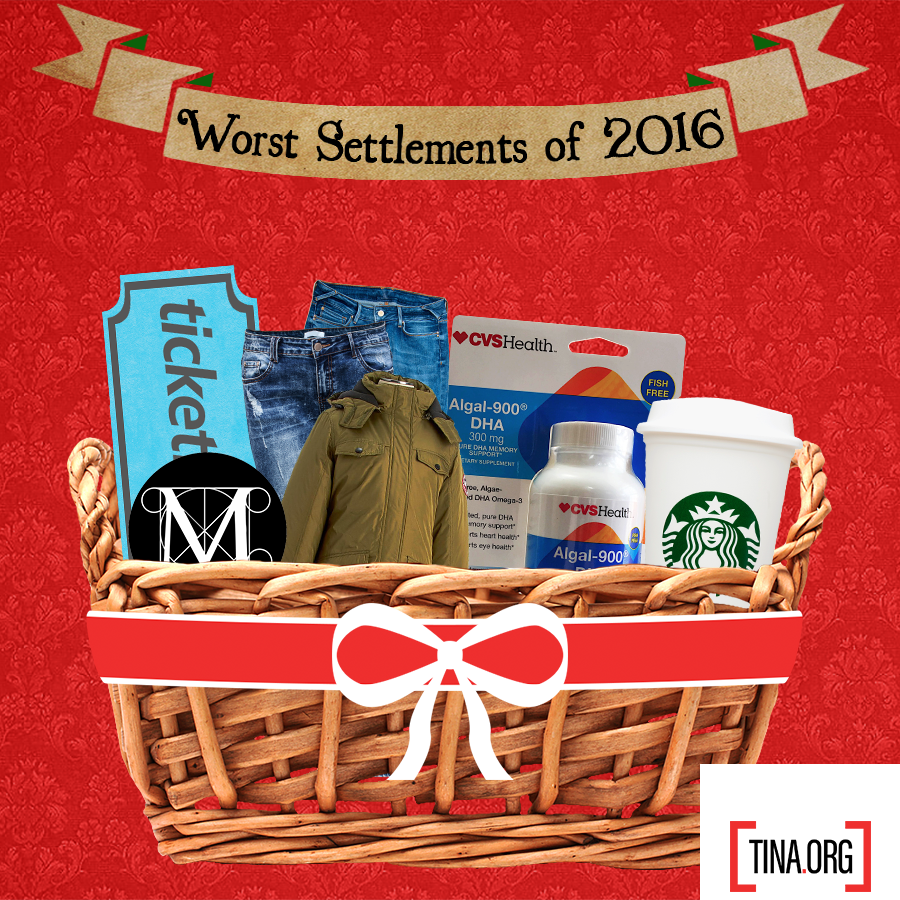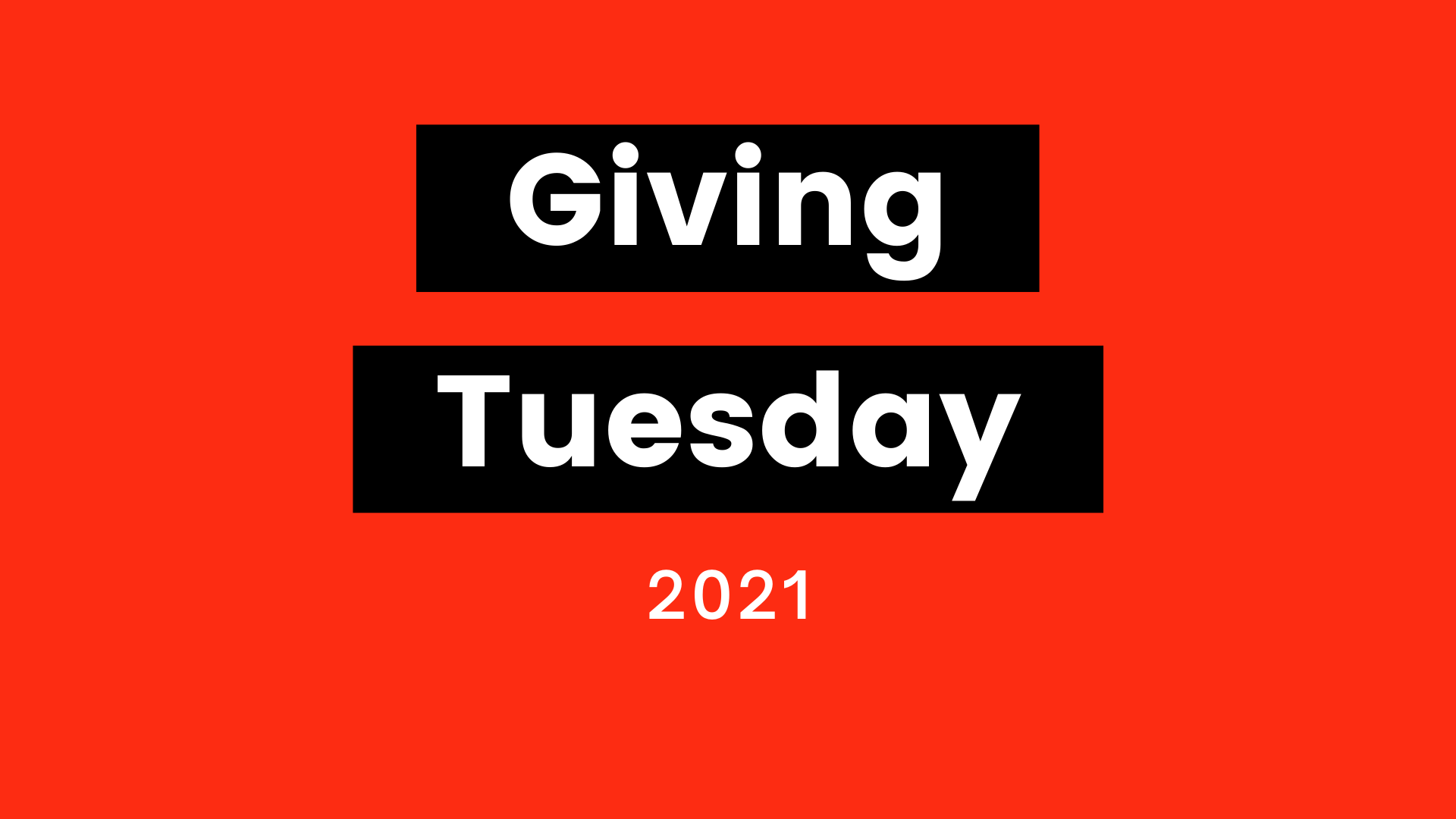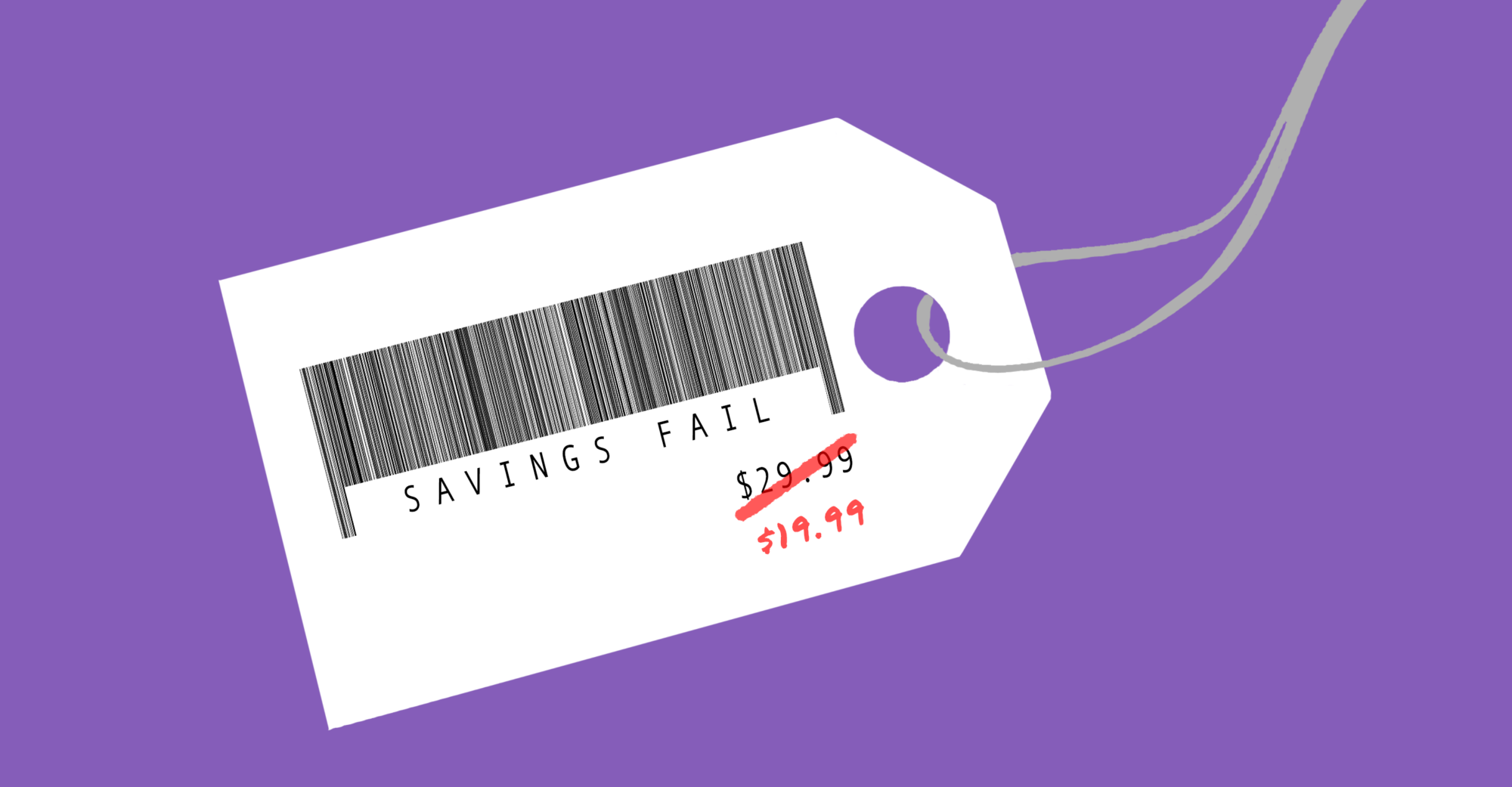
Best Reader Tips of 2021
This year reader tips led to dozens of ad alerts, as well as a complaint to regulators.
These class-action settlements fall short of adequate redress for consumers in the class.
TINA.org tracked more than 400 class-action lawsuits relating to false or deceptive advertising in 2016 and as always kept a watchful eye on the trends, outcomes, and settlements. Advertisements of 100-percent grated cheese grated on consumers as did so-called healthy and natural foods, supposed discounts, and earth-friendly vehicles that aren’t. Underfilled packages also prompted consumers to turn to the courts. But just as underfilled containers were a source of frustration, so were some of the unfulfilling settlements. Here’s TINA.org worst settlements list for 2016.
There’s just no sugar coating the parties’ settlement attempts in this misleading pricing case. Last July, consumers filed a class-action lawsuit in California federal court against Burlington alleging that the company engaged in deceptive reference pricing by comparing its “sales” prices to higher prices that were actually fictitious.
As part of a proposed settlement reached by the parties, consumers would receive a “merchandise certificate” worth $7.50 to be used toward new purchases in the stores. Burlington also agreed to provide better disclosures about its comparison prices, audit its pricing practices and provide additional training for employees. But federal Judge S. James Otero rejected the settlement, questioning the fairness of minimal consumer redress that forces consumers affected by the misleading pricing to buy additional Burlington merchandise. The court, among other issues, also was concerned that consumers would not be adequately notified about the settlement terms under the proposed procedures. This fall, a second attempt by the parties to settle the case was rejected by the court, once more on the issue of the $7.50 merchandise certificate, which it found offered no “real value” to consumers.
A third agreement reached in December would, if approved, allows consumers to cash in the merchandise certificate for $5 by either schlepping to the store (where they may be tempted to purchase more Burlington items) or taking the time to fill out a form, mailing it in, and waiting for the money. Or, they can use the full value of the $7.50 certificate in the store or online towards a new purchase. We’re wondering about the math on that. How does $7.50 = $5?
Made in the USA claims about pricey Current-Elliot brand jeans by Dutch LLC that contained foreign-made components set off a 2014 false advertising class-action lawsuit in California. As part of the first proposed settlement, the company offered a $20 e-gift certificate that can be used toward online purchases, as well as $250,000 to charities benefitting women, and agreed to change its labels to reflect the origin countries for components of the jeans. But U.S. District Court Judge Gonzalo Curiel rejected the agreement, saying that $20 was little compensation for jeans that cost more than $200 each. In reality, the certificate was just a discount that required consumers to make additional purchases. (The total amount of the $20 e-gift certificates consumers would receive to put toward new purchases depends on how many jeans they previously purchased and whether they have receipts or not. ) The court also took issue with the charitable donation because it wasn’t going to benefit a cause related to the litigation, and the court also rejected the attorney fees requested by the plaintiffs.
Round Two had the company offering a denim tote bag it claimed is worth $128 as part of the settlement. No go, the court said. The tote bag doesn’t resolve the consumer redress issue and other problems the court had already noted with the first proposed settlement.
In a third proposed settlement, the company agreed to donate $200,000 to a scholarship endowment at a non-profit university’s consumer science department. But the tote bag and $20 e-gift card code remain the only financial redress for consumers.
Did you know that you can actually visit the Metropolitan Museum of Art for under $1 or even just one cent? You might not know that because up until recently, the museum had signs noting that its recommended adult admission price is $25.
The signage, in part, prompted a class-action lawsuit in 2013 alleging that the Met was barred from charging visitors any amount of money under a law that dates back to the 1800s when the museum signed its original lease with the city. But during difficult financial times in the 1970s the museum instituted an admissions policy requiring some minimal contribution. The lawsuit alleged that the museum’s marketing misleadingly made visitors think they needed to pay the “recommended admission” when, in reality, visitors can pay whatever amount they choose.
The museum settled the case by agreeing to make changes to various marketing materials, including signs at the admission desks, website, and self-service ticket kiosks.
The key change? It has replaced the phrase “recommended admission” price with “suggested admission.”
According to the Oxford dictionary, recommending is stronger than suggesting. But suggesting still is defined as to “cause one to think that something exists or is the case.”
Thus, many visitors may indeed still be paying $25 when they could pay less.
Some of us tend to be grumpy in the morning before we have our coffee, or in this case, breakfast. Customers in California were particularly grumpy when they encountered higher prices for breakfast sandwiches at Starbucks than were advertised. Specifically, the class-action lawsuit filed in the state court last year alleged that Starbucks advertised a turkey bacon sandwich for $3.45 when it actually costs $3.75 and a sausage and cheddar sandwich for $3.25 when the coffee chain actually charges $3.45.
Hey, it all adds up eventually.
So, to settle the case, Starbucks, which is also facing several class-actions regarding alleged underfilled lattes and espresso drinks, agreed to give customers in the class a 25-cent refund that will automatically post to their Starbuck Rewards accounts. Customers who don’t have rewards accounts must provide proof they purchased one of these overpriced sandwiches in order to get their 25 cents.
Which leads us to wonder, how many Starbucks customers will still have a receipt for a less than $4 sandwich purchased some morning months or even a year ago?
Second, what can you purchase for 25 cents these days at Starbucks? The last time a cup of java cost 25 cents was, gee, who knows? Ask Grandpa.
Fees were at the center of a class-action lawsuit against Ticketmaster filed in California state court. The lawsuit filed way back in 2003 alleged that Ticketmaster charged customer processing and UPS expedited delivery fees and described them as necessary to cover costs when these fees were actually a way for the company to make a profit. Fast forward more than a decade and under a settlement in the case consumers — any Ticketmaster customer who placed a ticket order from October 21, 1999 through February 27, 2013, which turns out to be more than 50 million customers — are eligible for a $2.25 credit (aka voucher) toward a future Ticketmaster purchase. The company also made free tickets available to certain events.
But, and the but is very important, many of the events offered to customers in the class were sold out, were not geographically nearby to them, or weren’t even interested in attending.
Worse, Ticketmaster is still charging fees. Lots of them.
With more than 10 million baby boomers expected to develop brain disease, the market for products claiming they can improve brain function and even prevent, treat, or cure dementia or Alzheimer’s has been expanding, and so too have the challenges to the advertised claims.
CVS Pharmacy has faced two separate class-action lawsuits alleging that it deceptively markets the supplement Algal-900 DHA as able to improve memory and prevent cognitive decline without competent and reliable scientific evidence to support such claims. In May, one of the lawsuits reached a proposed settlement but the agreement may give consumers nothing but a headache. That’s because the settlement that is pending in New York federal court allows CVS to continue making deceptive implied memory improvement claims (i.e., “pure DHA memory support”) without sufficient scientific support. Further, if approved as is, consumers in the class are faced with unnecessary hurdles in order to obtain any cash reimbursements creating a windfall for CVS. And the most cash the majority of class members who file claims are likely to receive is $4 regardless of how many bottles of the supplement they purchased.
The court should consider the rejection of this proposed settlement a no-brainer. Read TINA.org’s objections to it here.
Coming soon
So that wraps up this year’s worst list. But no worries. We can already tell there’s more in the pipeline. We are particularly interested in watching the outcome, for example, of a $20 million lawsuit against KFC by a New York woman who alleges that the fast-food chain knowingly misleads consumers with advertised images of “overflowing” chicken for its Family Fill Up meal that doesn’t represent the amount of chicken customers actually get.
There’s also this complaint against Chipotle filed in California that alleges the Mexican fast food chain’s chorizo burrito leaves customers excessively full and can’t possibly be just 300 calories.
For more of TINA.org’s coverage of problematic settlements, click here.
This year reader tips led to dozens of ad alerts, as well as a complaint to regulators.
Support our mission of keeping ads honest by making a donation to TINA.org.
The illusion of savings.


